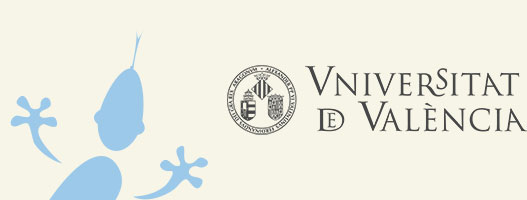Our latest paper on lizard cognition has just been published ahead of print in Biology Letters. Although there has been good evidence of lizard spatial learning for many years now, lizards are still frequently depicted as slow, inflexible learners. This is generally annoying, but it is particularly striking in the case of spatial learning because lizards are probably subject to strong selective pressures to this respect; i.e. due to foraging and predatory threats requiring quick learning and flexible use of suitable escape routes and refuges. The reason for this widespread taxonomic chauvinism partly has to do with the fact that some of the studies performed in the past seem to suggest that lizards take dozens of trials to learn a simple spatial learning task. However, many of these studies have been conducted using inadequate learning paradigms for lizards that may not always reflect the true measure of lizards’ brains (see Burghardt 1977 for an old but still excellent review). Fortunately, a host of recent studies seem to be slowly stemming the tide in the case for lizard cognition (see references below). Among them is our own study, conducted by Dan Noble on the Eastern Water Skink (Eulamprus quoyii), a common lizard species in Eastern Australia. This species is also the focus of Dan Noble’s PhD and given what we now about its biology, we used it in two different studies of spatial learning (stay tuned for and upcoming paper on behavioural and cognitive styles in Eulamprus!). Dan Noble used simulated predatory attacks as a form of reinforcement to test the ability of lizards to learn the location of a safe refuge. This same paradigm had been previously used with lizards, but a notable difference in this design is that this study was conducted in 3 m outdoor tubs. While you might argue that this limits comparisons with studies conducted in more tightly controlled laboratory conditions (and you would be right!), it meant that lizards were learning under more natural conditions. After learning the location of the safe refuge, we conducted a reversal of this task, switching the location of the safe refuge. A key strength of this study was our large sample size. Sixty male lizards were tested for spatial learning and of these, 19 (32%) learnt both the spatial and reversal tasks within only 10 days (3 trials/day) (spatial task mean: 8.16+0.69 (s.e.) and reversal spatial task mean: 10.74+0.98 (s.e.) trials). These results demonstrate that water skinks are capable of flexible spatial learning and we hope that this work, and the studies mentioned below, will help stimulate future studies of cognition in lizards that differ in phylogeny, ecology and behaviour. You can find more information in The Lizard Lab blog.
Download our paper from the Royal society’s web site or e-mail Dan(daniel.wa.noble@gmail.com) for a PDF.
References
Amiel, J.J., & R. Shine. 2012. Hotter nests produce smarter young lizards Biol. Lett. June 23, 2012 8 3 372-374; published ahead of print January 11, 2012, doi:10.1098/rsbl.2011.1161 1744-957X
Burghardt, G.M. 1977. Learning processes in reptiles. In Biology of the Reptilia (eds C. Gans & T. W. Tinkle), pp. 555–681. New York, NY: Academic Press.
Carazo, P., Font, E. & Desfilis, E. 2008 Beyond ‘nasty neighbours’ and ‘dear enemies’? Individual recognition by scent marks in a lizard (Podarcis hispanica). Anim. Behav. 76, 1953 – 1963. (doi:10.1016/j.anbehav. 2008.08.018)
Davis,K.M.&Burghardt,G.M.2011Turtles(Pseudemys nelsoni ) learn about visual cues indicating food from experi- enced turtles. J. Comp. Psychol. 125, 267–273.
Day, L.B., D. Crews, & W. Wilczynski. 1999. Spatial and reversal learning in congeneric lizards with different foraging strategies. Anim. Behav. 57, 393–407. (doi:10.1006/anbe.1998.1007)
Day, L.B., D. Crews, & W. Wilczynski. 2001. Effects of medial and dorsal cortex lesions on spatial memory in lizards. Behav. Brain Res. 118, 27–42. (doi:10.1016/S0166-4328(00)00308-9)
Day, L.B., N. Ismail, & W. Wilczynski. 2003. Use of position and feature cues in discrimination learning by the whiptail lizard (Cnemidophorus inornatus). J. Comp. Psychol. 117, 440–448. (doi:10.1037/0735-7036.117.4.440)
Font, E., and A. Gómez-Gómez (1991) Spatial memory and exploration in lizards: The role of the medial cortex. Abstracts of papers presented at the Animal Behavior Society 1991 Annual Meeting, University of North Carolina at Wilmington, p. 27 (soon in press).
LaDage, L.D., T.C. Roth, A.M. Cerjanic, B. Sinervo & V.V. Pravosudov. 2012. Spatial memory: are lizards really deficient? Biol. Lett. rsbl20120527; published ahead of print August 29, 2012, doi:10.1098/rsbl.2012.0527 1744-957X
Leal, M. & Powell, B.J. 2012. Behavioural flexibility and problem-solving in a tropical lizard. Biol. Lett. 8, 28–30. (doi:10.1098/rsbl.2011.0480).
Manrod, J. D., Hartdegen, R. & Burghardt, G. M. 2008 Rapid solving of a problem apparatus by juvenile black- throated monitor lizards (Varanus albigularis albigularis). Anim. Cogn. 11, 267 – 273. (doi:10.1007/s10071-007- 0109-0)





